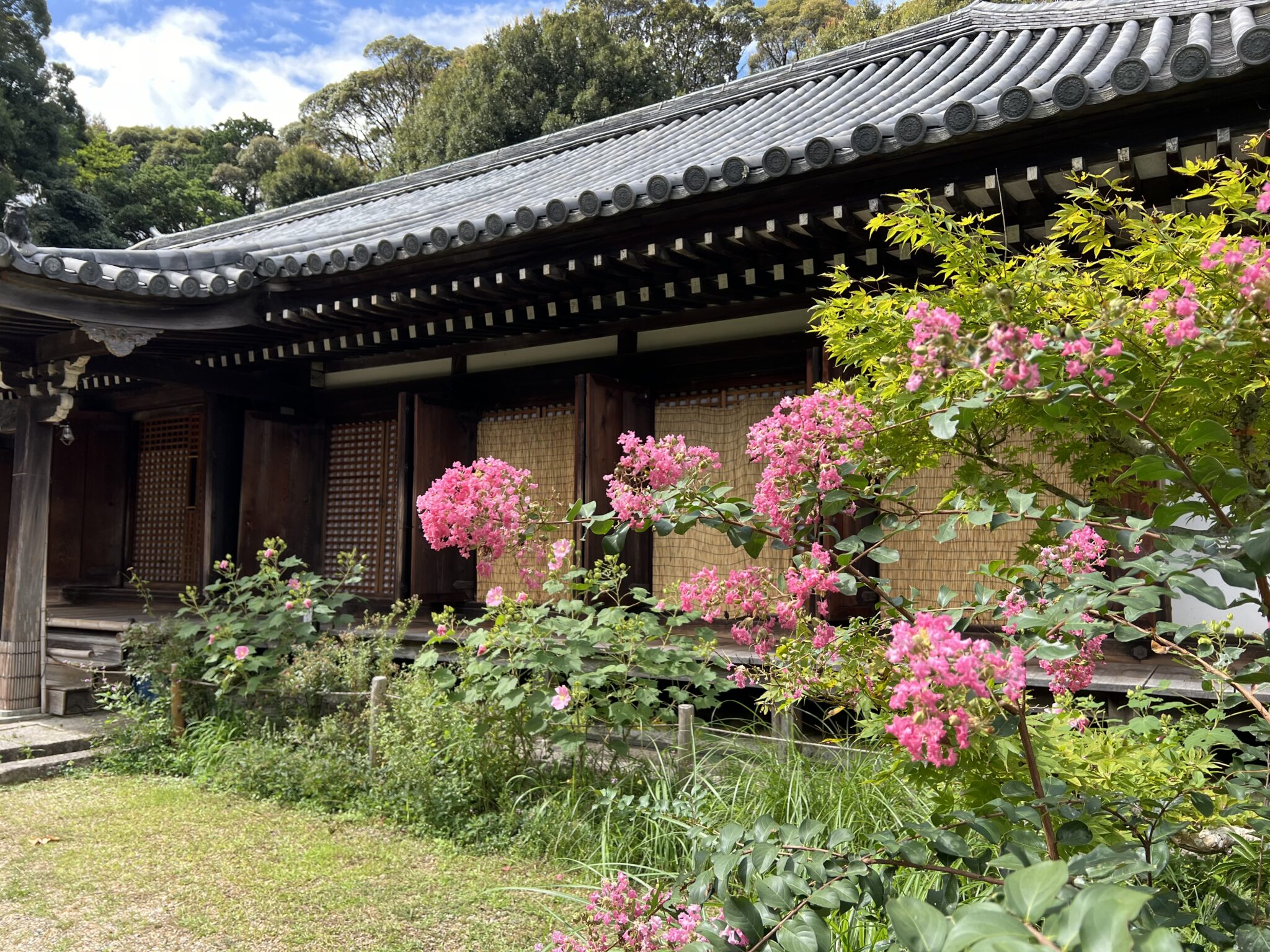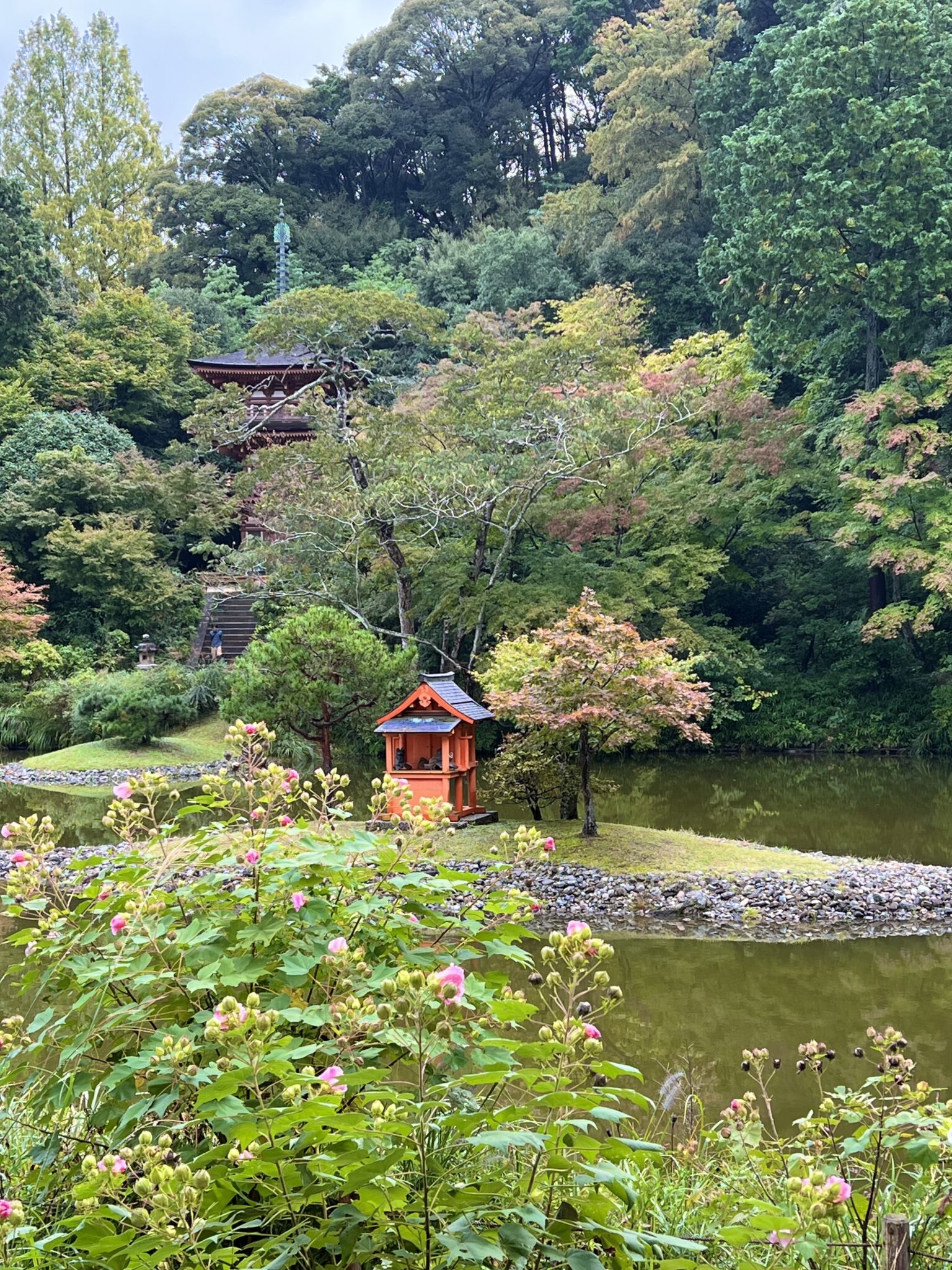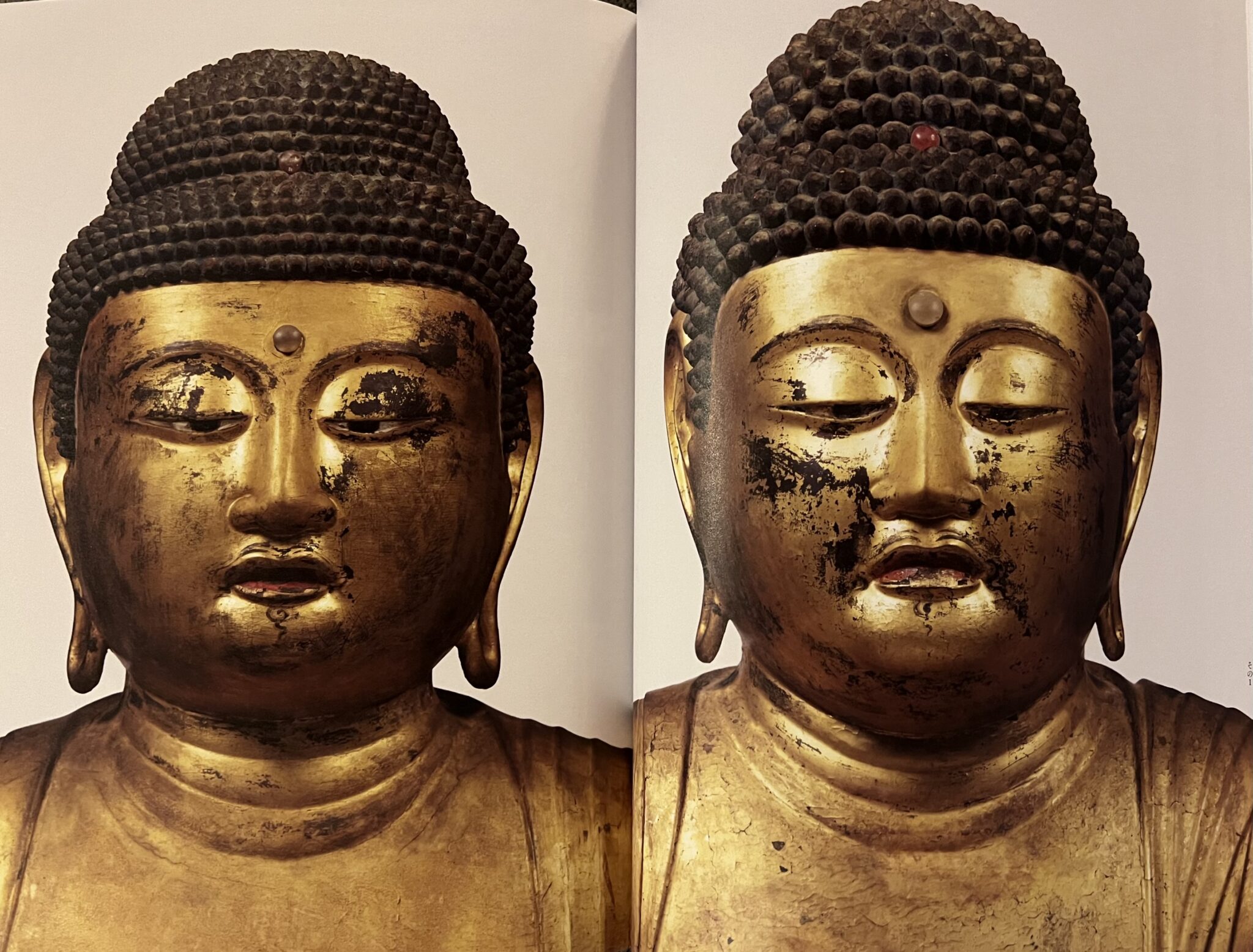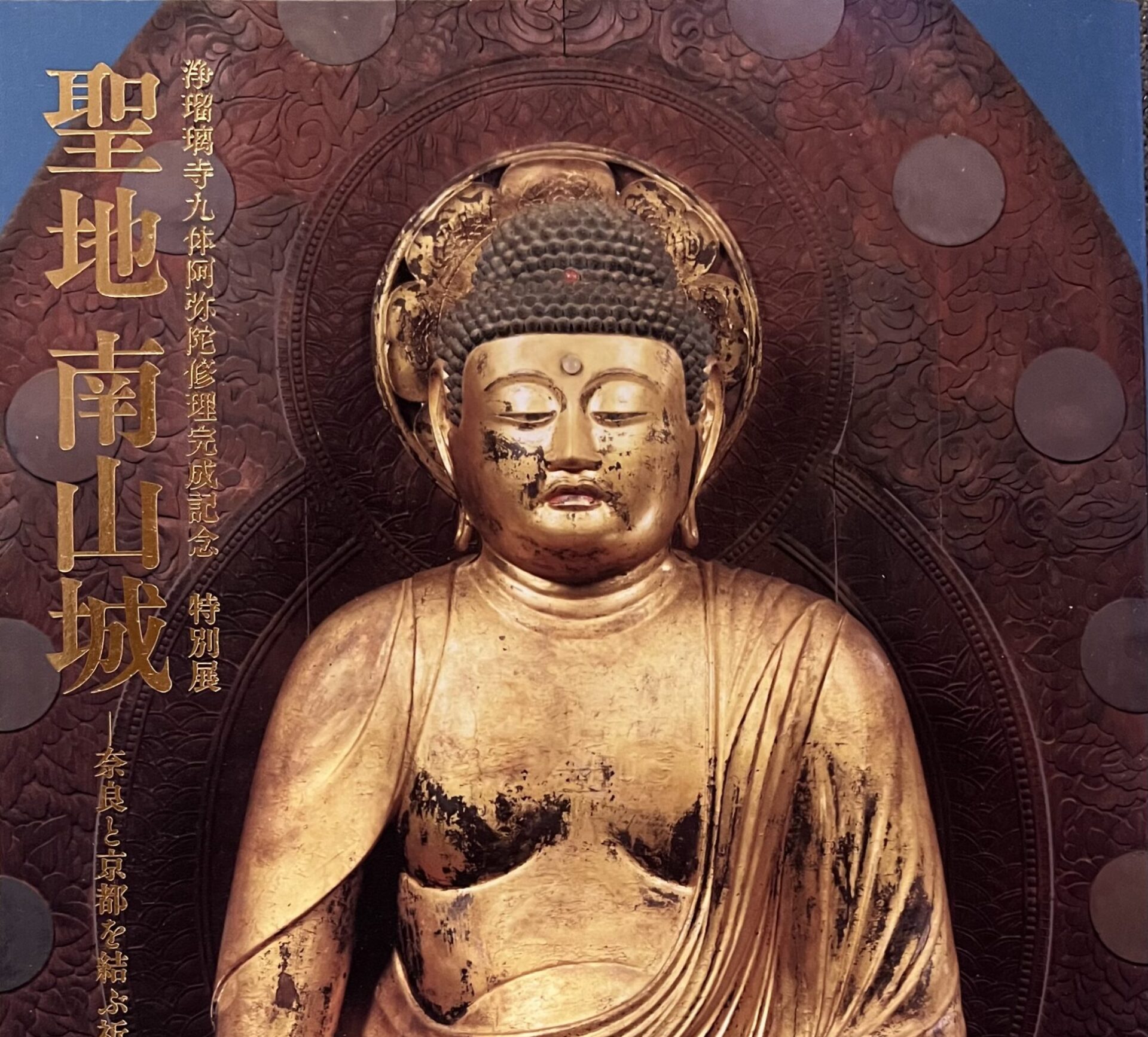The name of Joruriji Temple is said to be derived from the “Pure Lapis Lazuli World,” the pure land of Yakushi Nyorai (the Medicine Buddha). The approach to the temple’s main gate feels like a peaceful countryside path. On both sides, the thick growth of trees and plants creates a rustic atmosphere. I visited in October, and though the city had long stopped seeing them, many clouded yellow butterflies were fluttering about. I seem to recall someone mentioning that clouded yellows are a sign of good luck, so I ended up filming them. Along the approach, there is an old souvenir shop that has been there for ages. I’m sure if I took my time, I would have found many delightful things. Across from the souvenir shop, a few kittens were basking in the sun on a tin roof.

Access
Although this area is technically part of Kyoto, it is located at the southernmost point of the Minamiyamashiro region, on the border between Kyoto and Nara, making it more accessible from Nara City. This area, tucked away off the Kasagi-kaido Highway, was historically known as Tono or Odawara. In the Middle Ages, there were many branch temples of Kofuku-ji here. Some monks, like Jokyo from the Kamakura period, gave up their elite lives at Kofuku-ji to reside at mountain temples like Kasagi-dera and Kaijusen-ji, dedicating themselves to the restoration of many temples. I always come by car, but if you’re using public transportation, take the JR Yamatoji Line to “Kamo” Station, then transfer to the Kizugawa City Community Bus and get off at “Joruriji-mae.”
Tradition
According to the “Joruriji Ryuki” (Records of Joruriji Temple) passed down at the temple, which dates back to the first year of Kano (1350), the temple was established in the second year of Eisho (1047) under the vow of the monk Giyomyo, with the seated statue of Yakushi Nyorai as its principal deity. There is another theory that it was founded by the monk Gyoki under the vow of Emperor Shomu, but many details remain unclear. However, if the seated statue of Yakushi Nyorai currently enshrined in the three-storied pagoda is indeed the original principal deity from the temple’s founding in the second year of Eisho, it would align with the style and period, supporting the theory that the temple was founded in the 11th century without contradiction.

Temple Ground
As you pass through the temple gate, a serene Pure Land paradise opens up before your eyes. In the center is a pond, with the three-storied pagoda enshrining the seated statue of Yakushi Nyorai to the east and the main hall housing nine statues of Amida Nyorai to the west. This layout can also be seen in places like Byodo-in Temple. When I visited at the end of summer, the area around the pond was filled with many pink and white hibiscus and cosmos flowers in bloom. It’s recommended to start by walking counterclockwise around the pond, beginning at the main hall, and then proceed to see the three-storied pagoda and the bell tower. Inside the main hall, visitors are invited to view the space lit only by natural light, which is incredibly beautiful. The changing play of light and shadow as the sunlight filters in creates a peaceful atmosphere, where one can quietly continue to offer prayers to Amida Buddha—it’s truly a wonderful environment.

Main Image
The Nine Amida Nyorai Statues (eight in meditation mudra, with the central figure in the welcoming mudra), a National Treasure
This is the only surviving example of the nine Amida halls that were frequently constructed during the late Heian period. The enshrinement of nine statues is based on the concept of “Nine Grades of Rebirth” as described in the Contemplation Sutra (Kanmuryojukyo).
In 2023, the restoration of the final, ninth statue was completed, and commemorative exhibitions were held at both the Nara National Museum and the Tokyo National Museum. The sight of the nine statues lined up side by side in the main hall, illuminated solely by natural light, is awe-inspiring and possesses a captivating beauty that makes it difficult to leave.

Other Treasures
Joruriji Temple, though small, is like a jewel of Minamiyamashiro, housing many National Treasures and Important Cultural Properties. While access isn’t the easiest, it is well worth the effort to visit.
- Main Hall (National Treasure), Heian period
- Three-Storied Pagoda (National Treasure), Heian period
- Standing Statues of the Four Heavenly Kings (National Treasure), Heian period
- Kōmokuten is entrusted to the Tokyo National Museum, and Tamonten to the Kyoto National Museum
- Standing Statue of Kisshōten in a Shrine (Important Cultural Property), Kamakura period, a hidden statue
- Stone Lantern (Important Cultural Property), Nanbokucho period
- Standing Statue of Jizo Bodhisattva (Important Cultural Property), Heian period
And more.

My friend and I visited Joruriji Temple, Gansenji Temple, and Kaijusenji Temple, and we became completely captivated by the charm of Yamashiro. Shortly afterward, there was an exhibition at the Tokyo National Museum. I was able to see most of the Buddha statues there that had been absent when we visited Yamashiro. Since I had already seen the environments where these statues were originally placed, the experience of viewing them at the exhibition was all the more moving.

